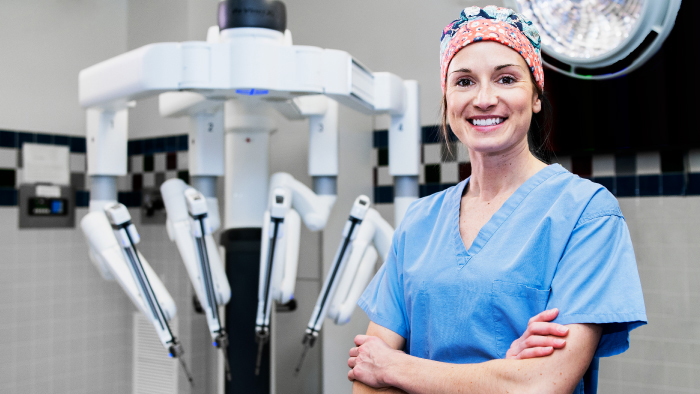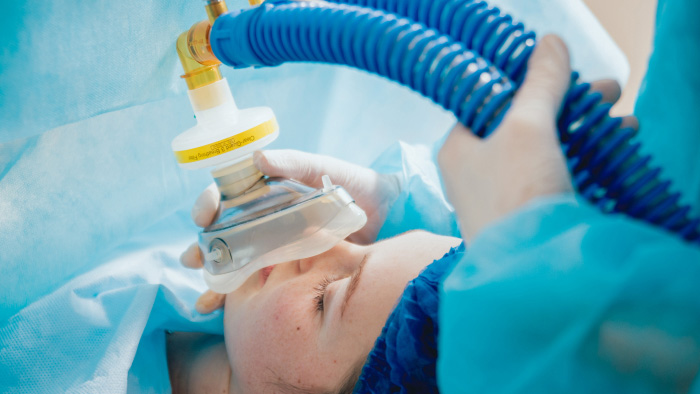The da Vinci® Xi™ Surgical System can be used across a spectrum of minimally invasive surgical procedures and has been optimized for multi-quadrant surgeries in the areas of gynecology, urology, thoracic, cardiac and general surgery. We are truly thrilled to be a leader in this field and look forward to continue bringing Southwestern Illinois minimally invasive surgical options.
Surgical Services
Our surgical teams work together, using the latest technology and modern facilities to provide excellent care close to home.

These highly trained and experienced surgeons represent a wide range of specialties, so ask your doctor about receiving your surgical care from our team at St. Elizabeth's Hospital.
Surgery is provided to inpatients, outpatients and emergency patients of all ages on an emergent, urgent and elective basis 24 hours daily.
We have 16 surgery suites where our surgical team will perform your surgery using the latest technology and least invasive procedures possible. Board certified anesthesiologists and certified registered nurse anesthetists provide the latest evidence-based anesthesia techniques.
Surgical Procedures
- Cardiothoracic
- Ear, nose and throat
- Endoscopy (upper and lower)
- General Surgery
- Gynecology
- Neurosurgery
- Orthopedic
- Pulmonary
- Plastic Surgery
- Podiatry
- Pain management
- Urology
- Vascular

Our newest technology

Anesthesia services
The latest, evidence-based anesthesia techniques are utilized in the operating rooms, delivery rooms and procedure areas. The anesthesia care team at St. Elizabeth's consists of an anesthesiologist and certified registered nurse anesthetist who will care for the patient throughout their visit. Prior to each planned procedure, the anesthesiologist scheduled to care for the patient will conduct a pre-operative evaluation to formulate an appropriate, individualized anesthesia plan.
The anesthesiologist and patient work together to develop the best plan for their care during the procedure. The type of anesthesia is chosen based on the safety of the patient, the ability to provide a speedy recovery and allow the patient to go home sooner. There are four major types of anesthesia utilized that can be combined to best meet the patient's needs.